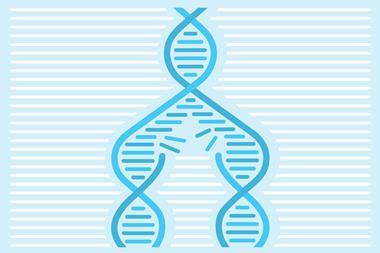Why Richard Dawkins’ The selfish gene is only part of the story
Richard Dawkins’ 1976 book The selfish gene, which topped a poll last year for the most inspiring science books of all time, has set the agenda for how we think about genes and DNA. ‘We are,’ he famously said, ‘all survival machines for the same kind of replicator – molecules called DNA.’ Battles have been fought over whether this is a good use of metaphor (and as with the ‘selfish gene’ itself, metaphor was all it was ever meant to be). But the fundamental premise on which it is built – DNA as replicator – seemed always to be sound.
Perhaps Dawkins’ most trenchant statement to that effect was in an attack on Harvard biologist E. O. Wilson for the latter’s advocacy of group selection: the idea that natural selection works at the level of groups of organisms (and presumably at other levels in the biological hierarchy from gene to ecosystem). This challenges Dawkins’ gene-centred view. Wilson ignores, argues Dawkins, that the gene ‘is on its own as a “replicator”, with its own unique status as a unit of Darwinian selection. Genes, but no other units in life’s hierarchy, make exact copies of themselves in a pool of such copies.’ Groups, meanwhile, do not make exact copies of themselves.
I will go out on a limb and say that I don’t believe anyone has ever observed a gene, as a discrete and autonomous unit, make an exact copy of itself, whether or not it is in a pool of such copies. It is not clear that a gene can be considered, from a chemical point of view, a replicator.
Proto-copiers
Molecular replicators do exist. Julius Rebek and coworkers demonstrated one of the first: a synthetic molecule that could act as the template for its own replication.1 Can DNA do that on its own? After a fashion, yes: very short strands of both single- and double-stranded DNA can produce copies when treated to a cycle of changing conditions.2,3
Such observations could well have implications for the origin of life. A biomolecule that truly can replicate is RNA, since it exhibits the enzyme-like behaviour needed to guide the process.4 That’s the basis of the RNA world hypothesis, which posits that something RNA-like was the first replicator.
But actual genes? The only way they have ever copied themselves is with assistance from enzymes such as DNA polymerase. That can happen in vitro using a cyclic process: the polymerase chain reaction (PCR) technique. But as far as we know, it happens in evolution only in cells, and with the gene embedded in a genome.
Dawkins’ language, both here and elsewhere, conveys the sense of genes as individual units swimming in a broth of other units and competing with one another. The notion that genes are ‘selfish’ relies on that image. But what gets made through DNA replication (copied, with errors, in the case of clonal reproduction) is an entire genome. Nothing useful is otherwise accomplished in biological terms. Only then do you have a functional entity – although even that is sterile as an autonomous entity without its cell. Sure, the new genome contains genes that are replicas of the original ones. But a replicator is not merely something that gets replicated (unless you want to use that term for a photocopied document, say). And natural selection can, itself, only act on genes in the context of other genes, because only then does ‘function’ emerge. But Dawkins is of course quite right that only the gene passes unchanged through that selective sieve – although how that influences his argument with Wilson, I’m not qualified to assess.
Selfless synthesis
There is, I think, no real disagreement about the facts here, and some will say it’s splitting hairs. However, once you accept that genes are not autonomous replicating units – which is the only meaningful notion of a replicator I can imagine – you lose any plausible sense of selfishness, even metaphorically. I rather fear that The selfish gene, while doing a marvelous job of explaining the basis of the modern synthesis of genetics and Darwinism, has left many readers with the impression that this synthesis posits a pool of genes battling it out: the one for hydrogenase, say, landing furious punches on the one for keratin. In The extended phenotype and other books, Dawkins expanded on that view; but I’m not sure the fact that it’s actually alleles, not genes, that ‘compete’ is noticed.
It’s very hard to find everyday language and imagery apt for the complex process of evolutionary genetics. The result is that our linguistic choices here are not neutral; that Dawkins has admitted he could just as well have called his book The cooperative gene tells you that. It’s doesn’t mean this classic work is wrong, but it reveals a particular choice about how to tell the story. I was reminded of that when in his new book Enlightenment now Steven Pinker – a champion of selfish genes – tells us ‘we are born into a pitiless universe… that is ruthlessly competitive’. As with all literature, we are then entitled to ask the author: so, why this story?
Editor’s note: Richard Dawkins was invited to reply but declined. He provided comments that have informed the article.
References
1 T Tijvikua, P Ballester & J Rebek, J. Am. Chem. Soc., 1990, 112, 1249
2 T Li & K C Nicolaou, Nature, 1994, 369, 218
3 D Sievers & G von Kiedrowski, Nature, 1994, 369, 221
4 N Paul & G F Joyce, Proc. Natl Acad. Sci. USA, 2002, 99, 12733












2 readers' comments